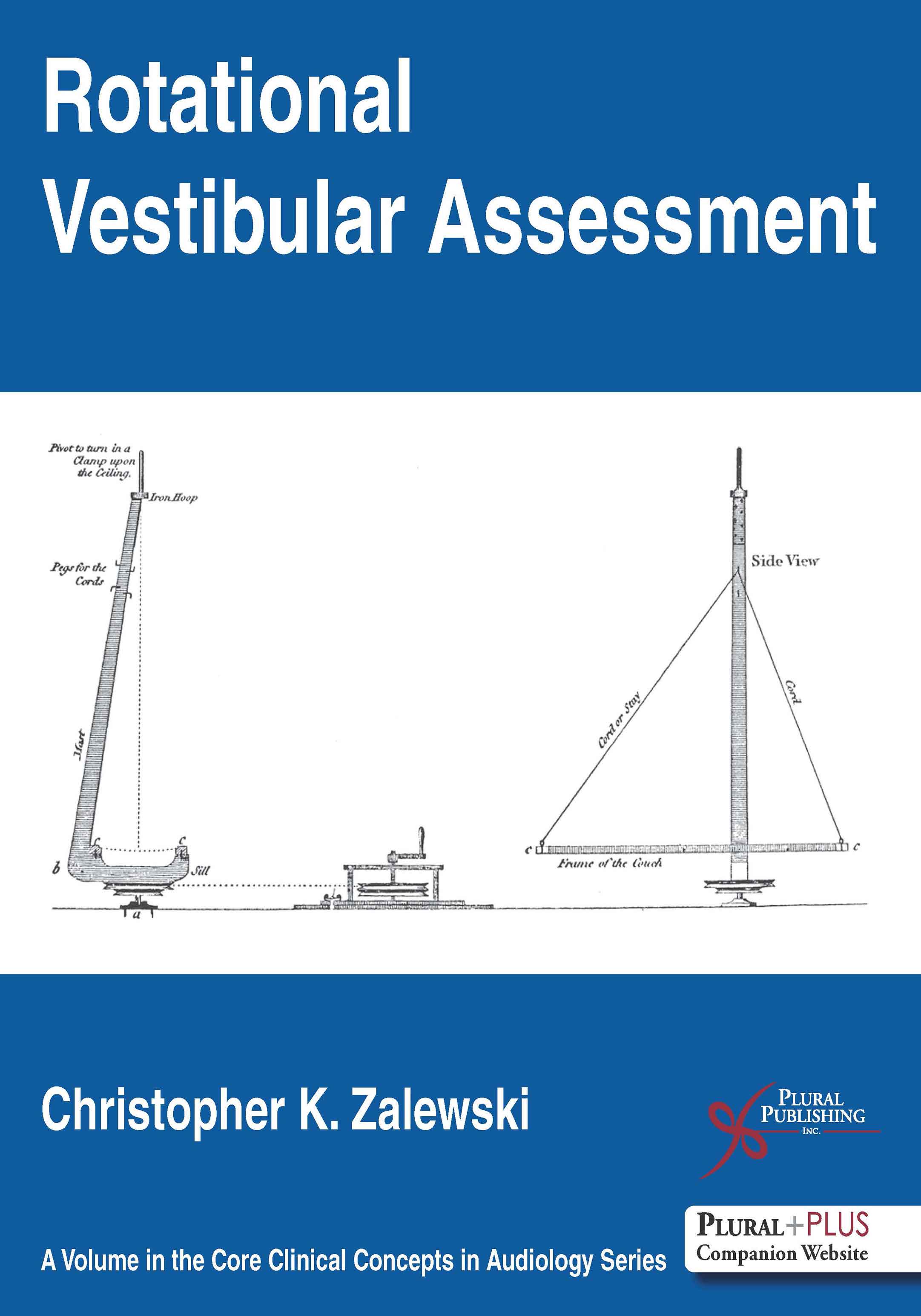
Rotational Vestibular Assessment
First Edition
Christopher K. Zalewski
Details: 322 pages, Full Color, Softcover, 8.5" x 11"
ISBN13: 978-1-59756-797-8
© 2018 | Available
For Instructors
Purchase
A Volume in the Core Clinical Concepts in Audiology Series.
Rotational Vestibular Assessment represents a primary clinical core for audiologists and expands the vestibular assessment battery through a comprehensive discussion of rotational vestibular testing. This text details the various tests that can be performed though rotational assessment, including the benefits and limitations of each. Test interpretation and clinical application of rotational outcome measures data is also discussed.
Rotational testing currently enjoys a unique presence in vestibular assessment as it offers an analysis of the vestibular system that is unparalleled in its ability to evaluate both peripheral and central aspects of vestibular disease, particularly when standard measures such as videonystagmography (VNG) are non-contributory. The future of rotational testing is promising as more affordable methods become available such as the use of booth-less rotational chairs and more affordable video ocular recording methods. In light of this, rotational testing is poised to become the new standard of vestibular assessment and this timely text is dedicated to its understanding.
The material is supplemented with a PluralPlus companion website that provides a selection of videos showing the various rotational tests, including the rotational stimuli and the VOR response generated during each test. Rotational Vestibular Assessmentis invaluable for anyone performing vestibular testing, rehabilitation, or evaluation. This includes audiologists, otologists, neurotologists, physical therapists, occupational therapists, and students seeking these professions.
Reviews
"It is a rare entity to find a textbook where 'the more you read, the more you wish to read'. Such is the case with this well-written book. Authored by one professional, the content builds and transitions nicely. One could wonder if such specialized content would be relevant to a broad audience; after reading the book in entirety, it is clear that rotation is one of the 'hallmarks' of vestibular evaluation and its valuable utility will only improve in the future. We welcome specialized textbooks based upon various hearing diagnostic and management areas. As vestibular sciences gain prominence, the same specialized need holds true. The vestibular and balance systems - and evaluation of these systems - are complex. Yet the author writes in such a thorough manner, while still maintaining rigor and complexity, that the content is as understandable as possible. This textbook is relevant for graduate students and professionals in the hearing and vestibular sciences, medical students and practitioners, individuals practicing in physical therapy and occupational therapy, and any others who hold interest in vestibular assessment. . . . This textbook is a 'must' for intermediate to advanced clinicians who evaluate and remediate dizziness and balance disorders. It is highly recommended to myriad professionals who exert teamwork to help evaluate patients across the lifespan and, of utmost importance, ameliorate their symptoms."
—L. Maureen Valente, PhD, Program in Audiology and Communication Sciences, Washington University School of Medicine, St. Louis, MO, USA, in the International Journal of Audiology (August 2018)
"Although Rotational Vestibular Assessment is a textbook aimed primarily at audiologists, all specialists involved in vestibular work, including medics, physiotherapists, and scientists will find something of interest here. The writing style adopted, combined with the numerous illustrations, all help to make what can be complex concepts readily accessible. . . . Overall, this book provides an excellent and accessible overview of rotational testing, with content that will find broader appeal to those involved in vestibular science, clinical testing and vestibular rehabilitation."
—Professor Christopher Degg, Consultant Clinical Scientist, Medical Physics and Clinical Engineering, Nottingham University Hospitals, NHS Trust, Honorary Professor of Balance Science, De Montfort University, UK, in ENT & Audiology News, Vol. 27, No. 4 (September/October 2018)
Preface
Acknowledgments
Chapter 1. Historical Perspective of Rotational Testing
Chapter 2. Anatomy and Physiology of the Peripheral Vestibular System
Chapter 3. Anatomy and Physiology of the Central Vestibular System, Velocity Storage, and Central Compensation
Chapter 4. The Vestibular Reflexes and Vestibular Nystagmus
Chapter 5. The Clinical Utility of Rotational Testing
Chapter 6. Sinusoidal Harmonic Acceleration (SHA) Testing
Chapter 7. Velocity Step Testing
Chapter 8. Supplemental and Specialized Rotational Tests
Appendices
References
Index
Purchasers of this book receive complimentary access to supplementary materials hosted on a PluralPlus companion website.
Materials:
- A selection of videos showing the various rotational tests, including the rotational stimuli and the VOR response generated during each test.
To access the materials, log in to the website using the URL and Access Code located inside the front cover of your copy of Rotational Vestibular Assessment.
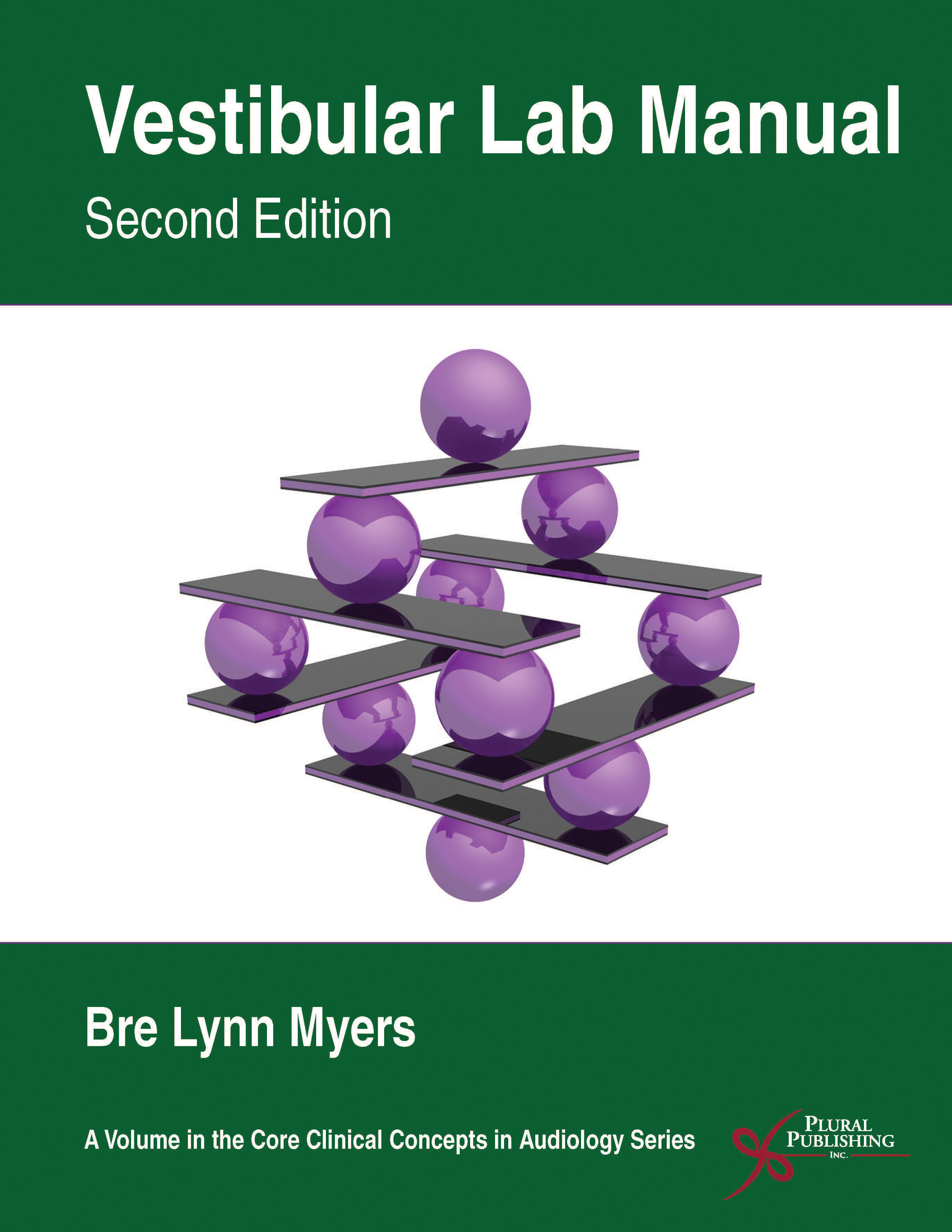
Vestibular Lab Manual
Second Edition
Bre Lynn Myers
Details: 170 pages, B&W, Spiral Bound, 8.5" x 11"
ISBN13: 978-1-63550-080-6
© 2020 | Available
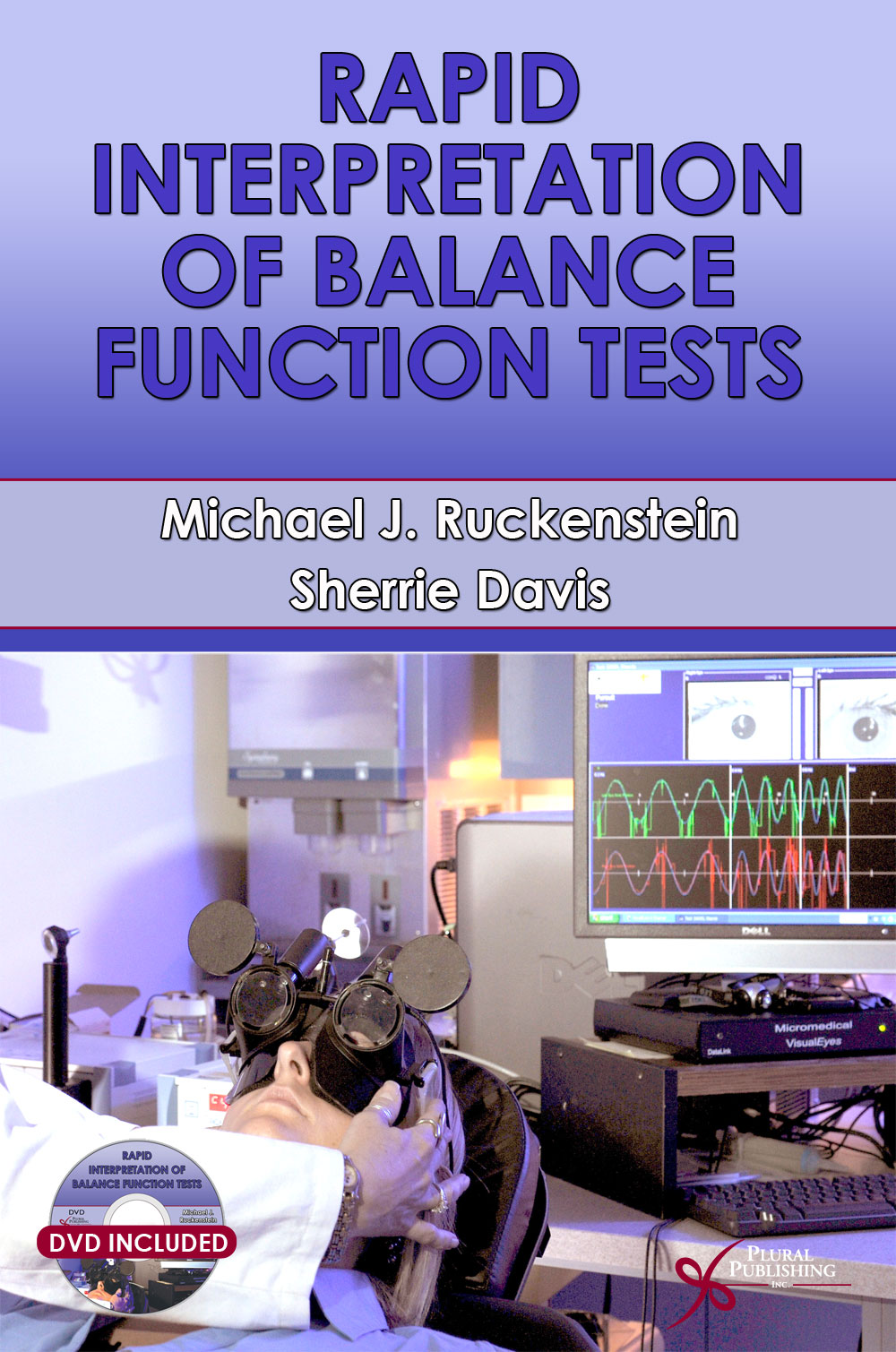
Rapid Interpretation of Balance Function Tests
First Edition
Michael J. Ruckenstein, Sherrie Davis
Details: 168 pages, B&W, Softcover, 6" x 9"
ISBN13: 978-1-59756-443-4
© 2015 | Available
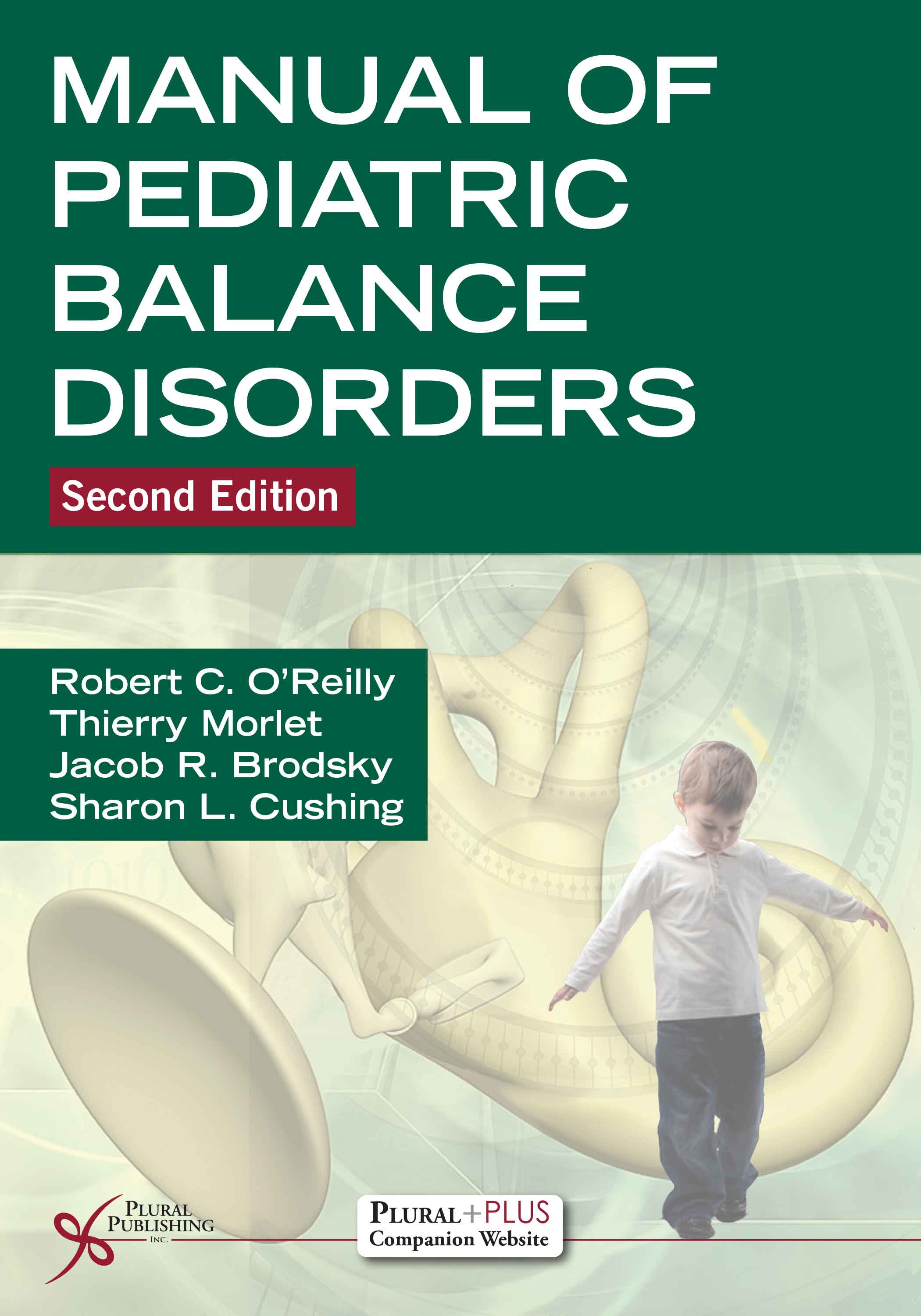
Manual of Pediatric Balance Disorders
Second Edition
Robert C. O'Reilly, Thierry Morlet, Jacob R. Brodsky, Sharon L. Cushing
Details: 458 pages, B&W, Softcover, 7" x 10"
ISBN13: 978-1-63550-146-9
© 2020 | Available
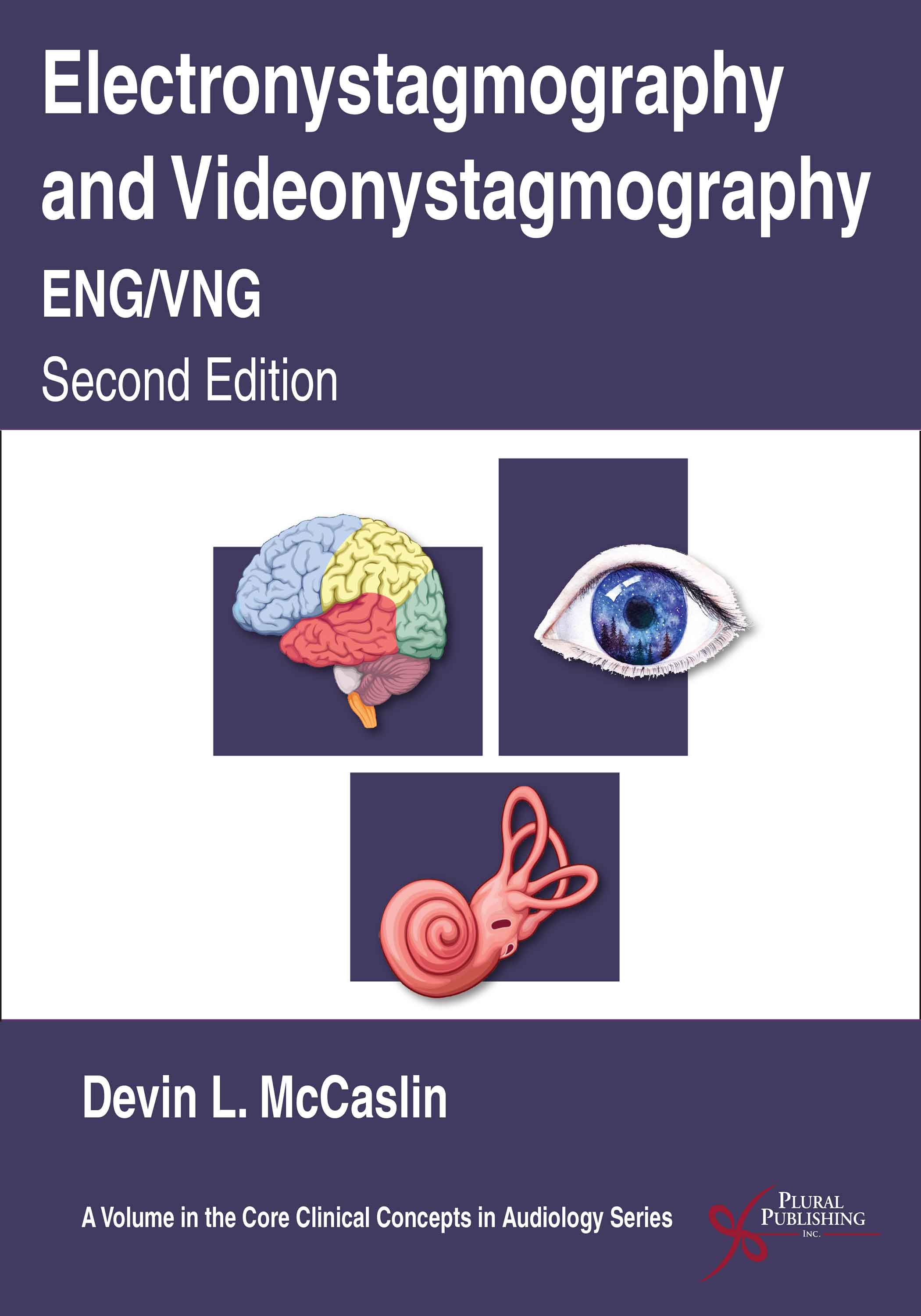
Electronystagmography and Videonystagmography (ENG/VNG)
Second Edition
Devin L. McCaslin
Details: 278 pages, B&W, Softcover, 8.5" x 11", Includes videos
ISBN13: 978-1-63550-081-3
© 2020 | Available
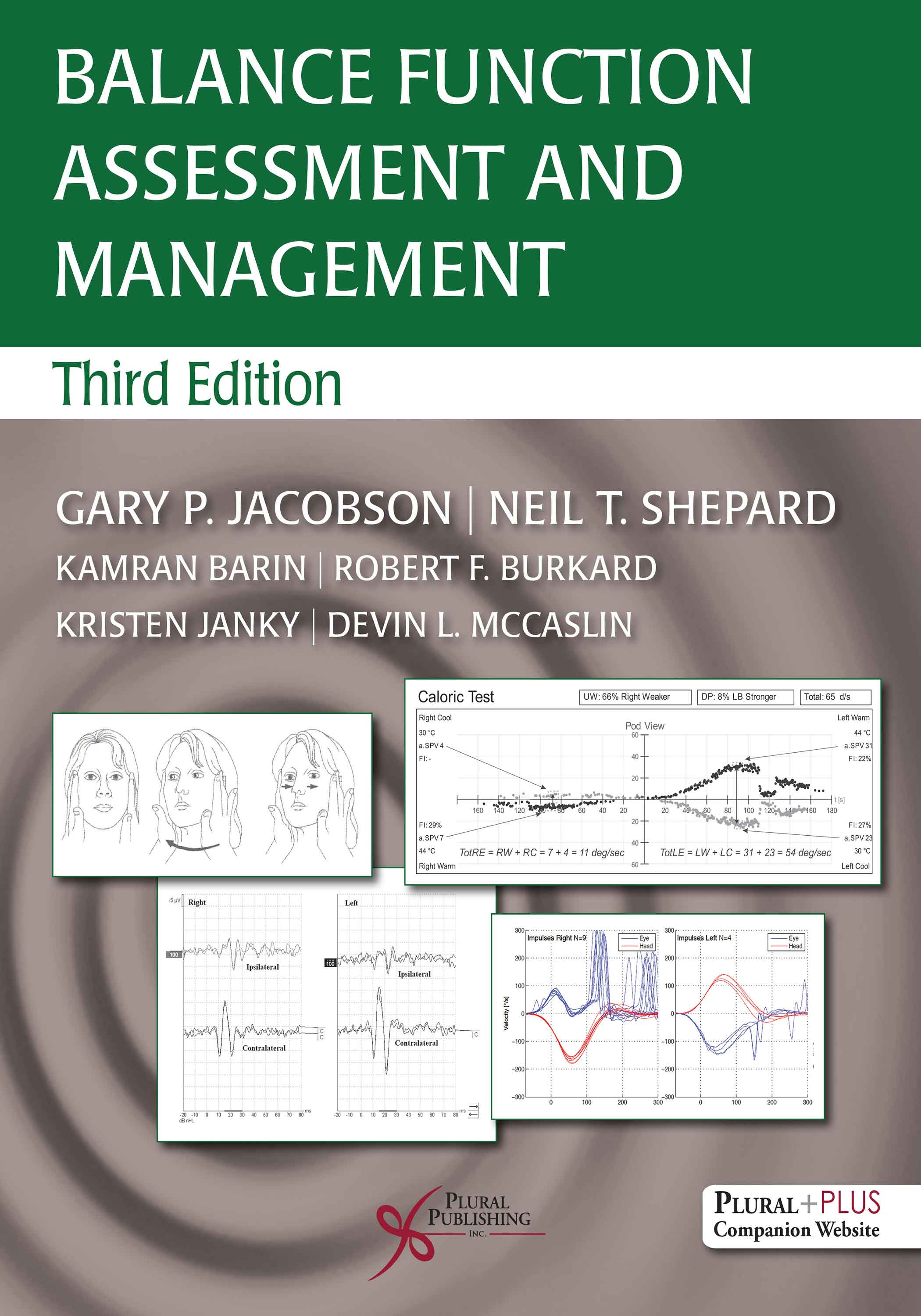
Balance Function Assessment and Management
Third Edition
Gary P. Jacobson, Neil T. Shepard, Kamran Barin, Robert F. Burkard, Kristen Janky, Devin L. McCaslin
Details: 717 pages, B&W, Hardcover, 8.5" x 11"
ISBN13: 978-1-63550-188-9
© 2021 | Available
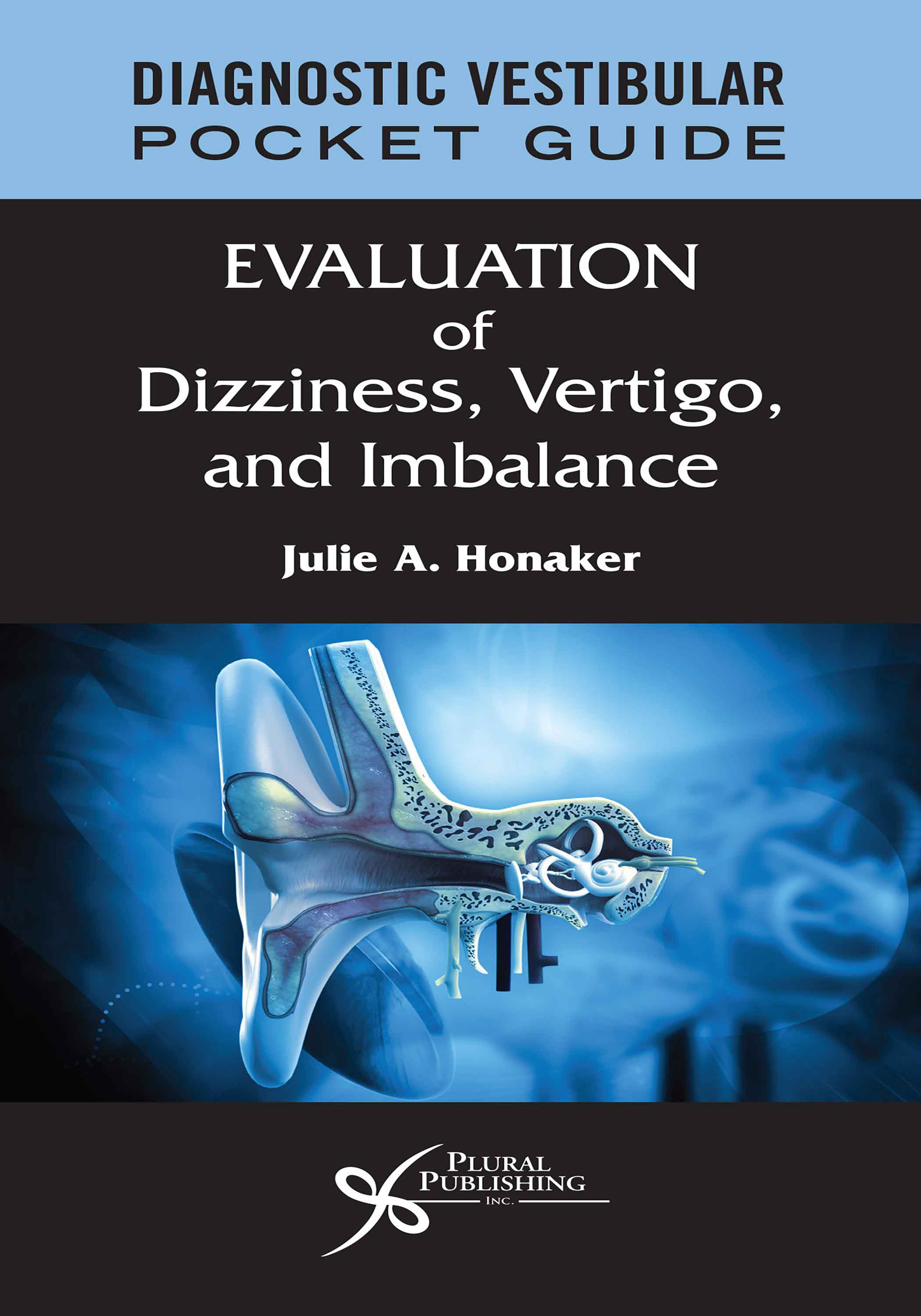
Diagnostic Vestibular Pocket Guide: Evaluation of Dizziness, Vertigo, and Imbalance
First Edition
Julie A. Honaker
Details: 288 pages, B&W, Softcover, 4.5" x 8"
ISBN13: 978-1-63550-312-8
© 2021 | Available

